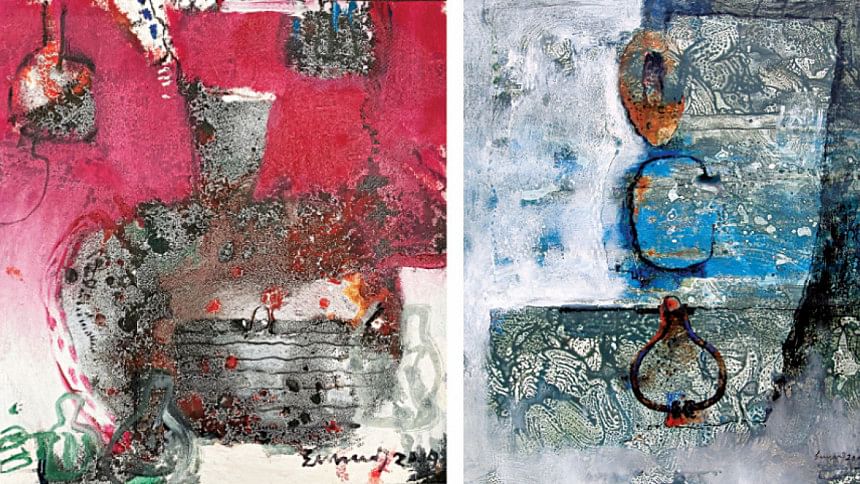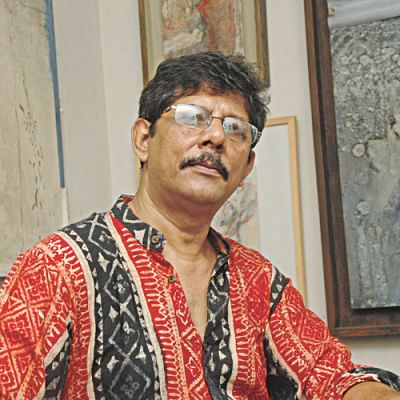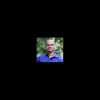“Pursuing art is a solemn perseverance” - Mohammad Eunus


Renowned artist Professor Mohammad Eunus was born on this day in 1954 to M Eusuf and Fajilatun Noor, of Thakurgaon. His father was a lieutenant of Pakistan Army and founder of Thakurgaon and Dinajpur Scouts. Mohammad Eunus was also a member of scout and joined many jamborees including Pakistan National Jamboree. He has always been interested in art. After he passed his matriculation in 1972, a signboard artist Saifur Rahman from Thakurgaon, influenced Mohammad Eunus greatly. “My father had a sketchbook, and I was fascinated with his sketches. I drew banners for many jatrapala and stage plays, including one on the Liberation War,” said Mohammad Eunus. “Then, I went to the Faculty of Fine Art (FFA), University of Dhaka (DU). As my hand writing and drawing skills were pretty good, one of our teachers, Mahbubul Amin, encouraged me to enroll at the Department of Graphic Design.”
Mohammad Eunus worked on many projects with renowned artist Alakesh Ghosh. He received the best award in Graphic Design when he was a third-year student. He also received the best award in Painting when he was a fourth-year student, competing with the students of Drawing and Painting Department, and in his fifth-year, he won the Shilpacharya Zainul Abedin Best Award in Painting.
After completing courses in fine art, he joined Bangladesh Television and married Riffat Eunus, who was a student at the Department of Ceramics, FFA, DU. Their son Ragib Yasar Mohammad Eunus is a computer science engineer.
Mohammad Eunus has exhibited his artworks in five solo shows and went to Japan to study art on a scholarship. “Before going to Tama Art University in Japan, I did realistic paintings. But I was not satisfied with what I was doing. My interactions and internal exchanges with the canvas were not appeased and I switched to abstract paintings,” he added. Renowned Japanese painters Miyazaki Susumi and Toshio Gi Tanaka were his guides in Japan.
For him, the essence of the rhythm of poetry, the melody of classical music and the visual beauty of abstract paintings are the same. He thinks surrealistic poems, especially those composed by Jibanananda Das, Indian classical music and abstract paintings are nearly identical. The painter has been depicting abstract, semi-abstract and pure-abstract works for over four decades. He employs colours, lines and textures to give his paintings a classical character.
“Pursuing art is a solemn perseverance. It’s a meditative worship that ultimately leads one to the realm of spirituality. A strong passion for art is imperative to become a great artist,” says Eunus.
The artist tries to express the inner feelings, elements and incidents of nature through his paintings. “Nature calls out to me at a deep level. My ‘Wall’ series is such an example. A wall evolves like a society; and sometimes we deliberately mess with it. We throw paint at it, hit it, damage it and then, we try to cure it. Society heals, leaving scars. My ‘Wall’ series endeavours to capture those healing walls,” he asserts. “My painting is a journey without any destination. I converse with the canvas in a meditative way when I start painting, playing with lines, colours, textures, themes and proportions.”
He likes the works of Antoni Tàpies and Anthony Claps. He regards Mohammad Kibria as the abstraction guru, the father of modern art in Bangladesh.
Mohammad Eunus has many national and international awards to his credit, including the Grand Award in Japan and an honourable mention award in Asian Art Biennale Bangladesh. His artworks are in the collection of the British Museum, Fukuoka Art Museum in Japan, and many private museums around the world.

 For all latest news, follow The Daily Star's Google News channel.
For all latest news, follow The Daily Star's Google News channel. 



Comments